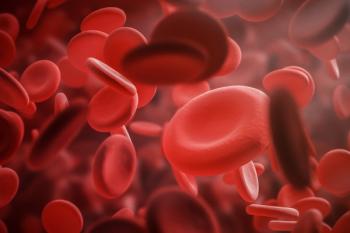
A leg to stand on
How aware of deep vein thrombosis is the general public and what is being done to treat the condition?
DVT is a common medical condition due to the formation of a fibrin clot in the deep veins of the body, most commonly in the legs. Up to 600,000 patients are hospitalized each year for the condition, and the American Heart Association estimates that two million people suffer from DVT annually. The primary complication of DVT is pulmonary embolism (PE), of which 300,000 people die yearly-more than breast cancer and AIDS combined. The occurrence of DVT and PE together is referred to as venous thromboembolism (VTE).
In February 2003, more than 60 organizations assembled at the Public Health Leadership Conference on Deep Vein Thrombosis to discuss the need to make DVT a major U.S. priority. Later that year, the Coalition on DVT decided to sponsor DVT awareness month, with the goal of educating the public, healthcare professionals, and policy makers about risk factors and signs and symptoms of DVT, and to identify ways to prevent mortality and morbidity from DVT and PE. The coalition has enlisted the support of the U.S. Senate as well as that of Melanie Bloom, whose husband, NBC correspondent David Bloom, died from the complications of DVT while covering the war in Iraq. Bloom has since become the coalition's national spokeswoman.
To boost public awareness, the coalition launched an educational campaign entitled "DVT Awareness by Design." In addition to increasing public awareness about the signs and symptoms of DVT, the campaign encourages the public and healthcare professionals to demonstrate their support through designing and personalizing their socks to show what DVT means to them. Then, in 2006, Melanie Bloom was featured on a public health announcement along with others sharing their stories of DVT. This year, she and the coalition are continuing their commitment to educate Americans about the dangers of DVT.
Identifying high-risk patients
Associated with potentially devastating complications, DVT can be prevented by identifying high-risk patients, who can then be treated with prophylactic therapy. Certain individuals may be at risk for developing DVT, although DVT can occur in almost anyone. Some risk factors for DVT include cancer, certain heart or respiratory diseases, prior DVT, advanced age, restricted mobility, inherited or acquired predisposition to clotting, obesity, pregnancy, long-distance travel, use of oral contraceptives or hormone replacement therapy, and trauma. "Medical patients who are hospitalized are also at risk of developing DVT. Only recently have we started to focus on medical patients," stated Nutescu.
Newsletter
Pharmacy practice is always changing. Stay ahead of the curve with the Drug Topics newsletter and get the latest drug information, industry trends, and patient care tips.





















































































































































